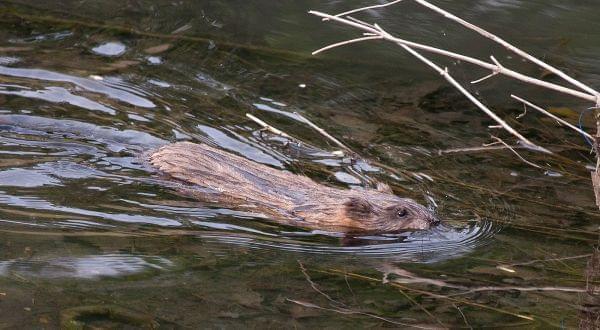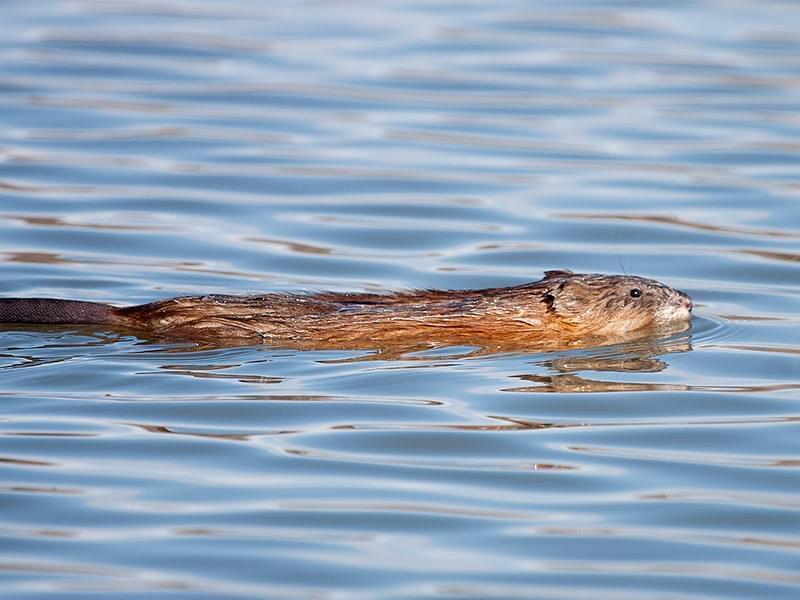Appreciating Muskrats

A muskrat in the creek at Scott Park in Champaign Rob Kanter
Last week’s segment ended with a teaser about an animal Illinois Public Media’s Lisa Bralts and I saw as we searched Scott Park in Champaign for urban wildlife. If you caught her segment of “Backyard Industry” on the topic, you know it was a muskrat.
As we watched from the bridge, it swam a short distance toward us until it came ashore on a small gravel bar. It then cut a bunch of bright green grass with its teeth and went back the way it came, disappearing from view around a bend in the creek. Bralts had never seen a muskrat before, and I’m always after better photos, so it was a very cool wildlife encounter for both of us.
What was a muskrat doing in Scott Park, just blocks from the center of town?
Muskrats occupy a wide variety of aquatic and wetland habitats, including slow moving creeks, such as the Boneyard, marshes, swamps, ponds and lakes. They are native to North America, where their range extends all the way from Alaska and northern Canada to northern Mexico. They inhabit every county in Illinois.
Like most Prairie State muskrats, the one that occupies the Boneyard Creek at Scott Park lives in a den it has excavated in the bank. The underwater entrance to the den is not visible from shore, but its approximate location is evident from the mass of cut vegetation and disturbed streambed around it.
You may also be familiar with another type of muskrat home, the lodges built by muskrats that live in shallow, still water, which can often be seen in borrow pits along highways. These dome-shaped structures are made with aquatic vegetation and mud; they’re much like beaver lodges, but built on a smaller scale.

A muskrat in the pond at First and Windsor, showing some of its tail
Muskrats are characterized by few of the things that writers and readers most enjoy in wildlife. At two to three pounds, and with a body about a foot long, they are neither big enough nor small enough to be remarkable. A muskrat’s scaly tail, which is about as long as its body, is flattened side to side and serves as a rudder. But it lacks the certain something that makes a beaver’s oversized, paddle-shaped tail a signature feature.
For my money, the most remarkable physical feature of muskrats is one we casual observers can’t actually see. It is lips that close behind the front teeth. This arrangement enables muskrats to chew submerged vegetation without taking in water.
As for what they can do, muskrats are pretty fast swimmers, with a top speed of about 3 miles an hour. But again, if you’re comparing, that’s less than half the top speed of a river otter. My sources all also mention that muskrats can swim backward, which must really be something to see, and they can reportedly stay underwater for 15 minutes.
Muskrats are also very good at making more muskrats, which enables populations to persist even under adverse conditions, and which serves the creatures that treat them as a resource. Among these are the many animals that eat them, with mink at the top of the list, and people who trap them for their pelts.
Unremarkable as muskrats may be as a species, I’m glad to know there’s one (or more) living in Scott Park. It’s a reminder that a little accommodation can go a long way toward integrating the human and the natural worlds.

